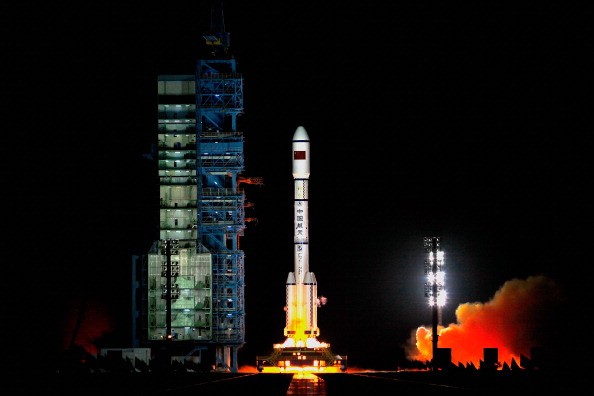Two Chinese astronauts safely returned to the Earth on Nov. 18, Friday after successfully completing China's month-long manned space mission. According to Zhang Youxia, commander-in-chief of China's manned space program, the Shenzhou-11 mission, which lasted over a month, was a "complete success" and the two astronauts were in good condition.
The re-entry capsule of Shenzhou-11 landed at the projected site in central Inner Mongolia Autonomous Region around 1:59 pm Beijing Time, Beijing Aerospace Control Centre said in a statement issued to Xinhua. Immediately, the ground search team arrived at the landing site, and the two astronauts, Jing Haipeng and Chen Dong, themselves opened the capsule's hatch.
While the space mission was the third for the crew commander, Jing Haipeng, 50, it was the maiden mission for Cheng Dong, 38. Haipeng had also been a member of the Shenzhou-7 and Shenzhou-9 space missions.
Shenzhou-11 was the sixth manned spacecraft of China, which was also the longest space mission till date. Two days following the launch of Shenzhou-11 on Oct. 17, the spacecraft docked with China's pioneering space lab, Tiangong-2. During the mission, the spacecraft transported personnel as well as materials to and from the Earth and Tiangong-2.
It also tested meeting, docking as well as return processes. Haipeng and Dong also conducted three tests, including raising silkworms in space, prepared by middle students from the Hong Kong Special Administrative Region.
In addition, Shenzhou-11 also undertook various aerospace medical experiments, in-orbit maintenance and space science experiments. These tests will help China to boost its endeavors to set up the country's permanent space station by 2022. By 2022, China will become the sole country to have this kind of facility in operation, as the existing in-service International Space Station stop workings by 2024, the China Daily reported.
It is expected that the primary module of China's space station will be launched sometime around 2018. The space station, which has been designed to last for at least a decade, is expected to be fully operational by 2022. When in service, it will have the capacity to accommodate three to six astronauts in space up to one year.
Tiangong-2 will continue to be in service in orbit even after Shenzhou-11's return to Earth. Now, the space station will be waiting to dock with China's first cargo spacecraft, Tianzhou-1. In April 2017, China will launch Tianzhou-1 to test the re-fuelling technology, which is vital for any space station.
Watch the successful return of Shenzhou-11 to the Earth after month-long manned space mission:


